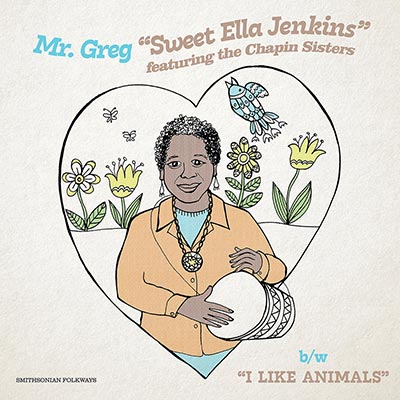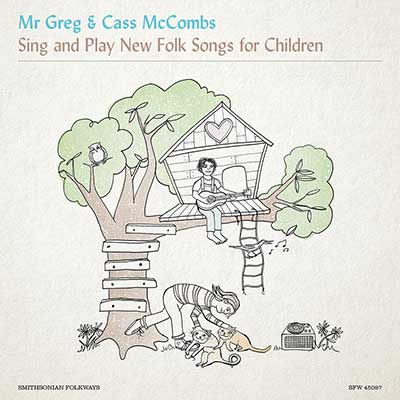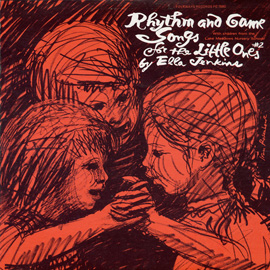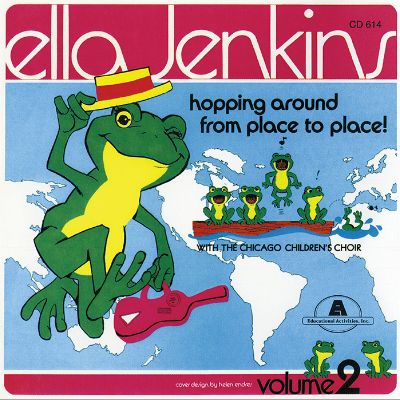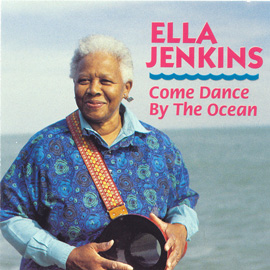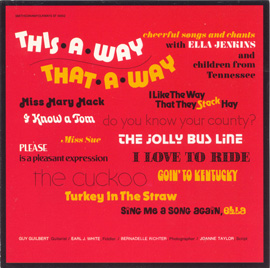Summary
In these three lessons, students will explore the wonders of the natural world to the tune(s) of Ella Jenkins. Students will use Ella’s songs about trees, animals, and environmental stewardship as a springboard for learning about tree types, animal attributes, and ways to care for our earth. Students will engage in a nature walk, observational drawing, sculpting, counting, sorting, classifying, recycling, composting, dancing, singing, active listening, and sharing their thoughts and ideas.
- Lesson 1 uses Ella’s songs to teach about tree types and features, engaging in music, math, English language arts, physical education, and art.
- In Lesson 2, Ella’s songs engage students in art, science, music, and dance by exploring animal attributes and movements.
- Lesson 3 (this lesson) uses Ella’s songs to teach about environmental stewardship, developing math, music, language, and other skills.
Lesson 3: Caring for the Environment

Suggested Grade Levels: PreK–K
Country: United States
Region: North America
Culture Group: American
Genre: Folk
Instruments: Vocals, body percussion
Language: English
Co-Curricular Areas: English Language Arts, Science, Visual Art, Math, Music
National Standards:Common Core Standards for English Language Arts: SL.K.1, SL.K.6; Science: K-ESS3-3; Math: K.MD.3; Music: MU:Cr1.1.Ka, MUCr1.1.Kb, MU:Cr2.1.Ka, MU:Re7.2.Ka, MU:Cn11.0.Ka
Prerequisites: None
Objectives:
- Develop an understanding of vocabulary related to the environmental conservation.
- Develop an understanding of how we can be good stewards of the Earth.
- Identify different types of trees based on their defining characteristics.
- Promote classroom community and music appreciation by exploring music about environmental conservation.
- Describe the positive and negative impacts that humans can have on the environment.
- Actively make music by performing chants, creating lyrics, and keeping a beat.
- Learn about an important singer-songwriter (Ella Jenkins).
Materials from Smithsonian Folkways Recordings:
Other Materials:
Optional Materials:
Lesson Segments:
- Learn about Ella Jenkins (Optional - if you did not complete Lesson 1)
- Explore musical chants about the environment
- Explore vocabulary related to the environment and discuss pollution
- Learn about the three Rs model of sustainability
Learn about Ella Jenkins
Ella Jenkins is a groundbreaking performer, recording artist, and educator who has dedicated her life to educating children through music. She recorded her first album for Folkways Records in 1957, and since then has released 40 more albums with the label (now Smithsonian Folkways Recordings). She has performed for and with children on all seven continents and has received countless awards and recognition for her work. By listening to and performing Ella’s playful and captivating songs, children learn to appreciate and understand themselves, others, and the world around them.
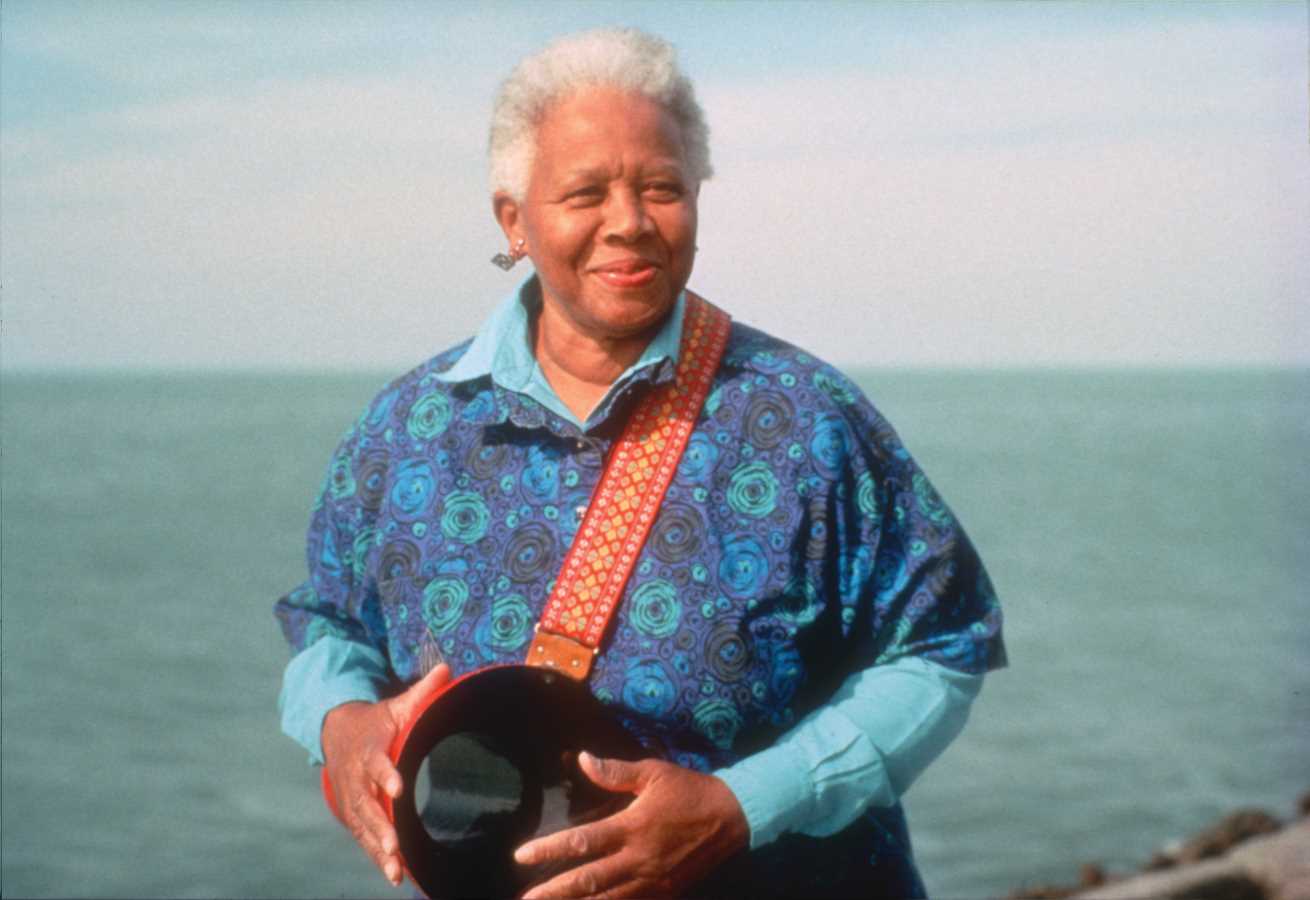
- Listen to Mr. Greg and Cass McCombs’s new single, “Sweet Ella Jenkins” (a tribute song).
- As students listen, encourage them to gently tap the steady beat and think about who Ella Jenkins might be.
- After listening, gather the students’ ideas.
- Next, share some basic information with your students about this remarkable woman, who will turn 100 years old this summer (2024)!
- Ella Jenkins is an important singer and teacher who has been recording songs for about 70 years. Some people call her the “First Lady of Children’s Music.” She has performed songs for children on all seven continents! Ella has also appeared on famous TV shows like Mister Rogers’ Neighborhood and Sesame Street. In addition to singing, she plays the guitar, ukulele, and harmonica.
- Tell students that today, they will get to hear some fun songs performed by this incredible lady.
- Optional extension: Learn more about Ella Jenkins by watching this A Life of Song: The Story of Ella Jenkins, a wonderful children’s book by Ty-Juana Taylor.
Explore musical chants about the environment

- Listen to “Solution to Pollution (An Introduction to Environmental Concerns)” and "Environment Game" by Ella Jenkins, from the album Come Dance by the Ocean.
- Play "Environment Game" again and encourage students to echo Ella (along with the recording).
- Optional musical extension: Create your own class version of this chant. Start with a simple body percussion patten (pat, pat, clap works well). Simulate Ella’s call and response chant with the students in your class:
- Everybody: “Hey everybody, let’s play a game, let’s play a game with rhythming names. There’s a place for a lady, there’s a place for a gent. Our game is about the environment.” song.
- Teacher: “(student echoes each phrase): “Ben, Ben // let’s protect // the rainforest //."
- Continue this game, making up new verses for the chant until every child has had a turn.
Explore vocabulary related to the environment and discuss pollution
- Ask students what they know about the word pollution and lead a short discussion based on their ideas.
- Next, listen to “Solution to Pollution” again and ask students how the words Ella introduces (land, water, noise, and air) relate to pollution. What are some examples of each? Consider making a list.
- As this discussion emerges, you may wish to unpack other terms that relate to pollution, such as environment, acid rain, recycling, composting, steward. Ask students: Why is it important to take care of our environment? What can happen to plants and animals if we don’t take care of the environment? How can we help take care of the environment and be good stewards of the earth?
- Optional extension: Collect students’ thoughts and ideas about this topic. Post them on the classroom wall, refer to them, and add to them often.
Learn about the three Rs model of sustainability
- Introduce the three Rs model of sustainability: reduce, reuse, recycle and ask the students to provide examples of each. Facilitate a discussion about how we can do our part to help take care of the earth’s environment by recycling (as mentioned in “Environment Game”) and composting.
- Optional extension: Read a non-fiction book about recycling and composting if desired.
- Optional extension: Procure recycling and compost bins for the classroom if you don’t already have them.
- Optional extension: After lunch, model how to sort trash, recyclables (plastics, glass, paper), and compostable material (food scraps, soiled napkins) into the proper bins. Then, invite the students to sort their own refuse into the proper bins.
- Optional extension: Ask students to draw pictures of items that can be recycled and composted and post their work on the corresponding bins for reference.
Extensions:
- Listen to Ella's recordings of “Clean Up Week,” and "A Big Pig Sty" and ask the students for their ideas about how they can help clean their school campus.
- Invite students to lend their helping hands to clean up the schoolyard, local park, beach, or nature trail. Provide the students with gloves and trash grabbers. When finished, ask the students to work together to sort the debris into compostables, recyclables, and trash. Invite families to join the class in cleaning up the environment.
- Listen to the song “Things that Go in the Recycling Bin,” by Mr. Greg and Cass McCombs, and make a collaborative illustrated poster of items that go in the recycling bin and the compost pile.
- Start a compost pile in the school garden to enrich the soil in the planting beds.
- Talk about the role worms play in composting and procure a worm bin for the classroom.
- Marvel at the natural beauty of rainbows while listening to and singing “You Can’t Sink a Rainbow (A Tribute to Greenpeace)”. Students can draw or paint a rainbow while listening or you could look at pictures online.
- Work together with your school music teacher to use the songs from this unit as the basis to create a short musical performance that students can perform for their parents.
Assessment:
- Can students explain who Ella Jenkins is and why her music is important?
- Can students perform a rhythmic chant about the environment while keeping a steady beat?
- Can students explain the meaning of terms related to environmental concerns (e.g., environment, pollution, recycling, composting, steward)?
- Can students demonstrate understanding of how humans can be good stewards of the Earth (by creating their own lyrics to a familiar chant)?
- Can students demonstrate stewardship by sorting trash, recyclables, and compostables into the proper bins?


